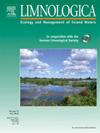芦苇线之间:陆地三维激光扫描评估休闲对湖滨植被的影响
IF 2
4区 环境科学与生态学
Q2 LIMNOLOGY
引用次数: 0
摘要
在湖中游泳和在岸上消磨时间是夏季流行的活动,但随着气候变化的持续和土地利用的加剧,对湖岸生态系统的压力正在增加。特别是,植物通过稳定海岸线和提供栖息地在这些生态系统中发挥重要作用,但它们受到人类使用造成的践踏和破坏。然而,湖滨游憩对植物的影响尚不清楚。为了评估沐浴者对芦苇床和海岸线日光浴面积的影响,采用陆地激光扫描(TLS)技术,以极高的时空分辨率分析了植物物质的地上空间分布变化。通过对德国勃兰登堡9个湖泊夏季周末前后的测量,比较了湖滨植被体素化TLS点云体素(即立方体积元)的占用情况。此外,还进行了标准化的游客计数,以确定浴场的访问量。在一个夏季周末的过程中,沐浴点和对照点的芦苇总体积变化相似。分析发现,高动态体积变化与游客密度梯度的沐浴活动之间没有明确的关系。日光浴区植被变化总体较小,周末后没有明显的定向增减趋势。当我们研究已建立的地点时,植被可能已经适应了人类的使用。虽然目前的游客密度和游客行为似乎没有引起明显的变化,但如果未来使用强度增加,游客管理措施将是必要的。本文章由计算机程序翻译,如有差异,请以英文原文为准。
Reed between the lines: Terrestrial 3D laser scanning to assess recreational impacts on lakeshore vegetation
Swimming in lakes and spending time on the shore are popular summer activities, but as climate change continues and land use intensifies, pressure on lakeshore ecosystems is increasing. In particular, plants play an important role in these ecosystems by stabilizing the shoreline and providing habitat, but they suffer from trampling and destruction caused by human use. However, the effects of lakeshore recreation on plants are not well understood. To assess the impact of bathers on the reed bed and the area of the shoreline used for sunbathing, terrestrial laser scanning (TLS) was employed to analyze changes in the aboveground spatial distribution of plant material at very high spatial or temporal resolution. Measurements were taken before and after summer weekends at nine lakes in Brandenburg, Germany, and the occupancy status of voxels (i.e., cubic volume elements) in voxelized TLS point clouds of the lakeshore vegetation was compared. In addition, standardized visitor counts were conducted to determine the bathing sites' visitation rates. Over the course of a summer weekend, bathing and control sites displayed similar changes in total reed volume. The analysis has identified no clear relationship between the highly dynamic volume changes and the bathing activity along the gradient of visitor density that has been considered here. The variation of vegetation in the sunbathing area was generally small and showed no clear tendency for directed loss or gain after a weekend. As we studied established sites, the vegetation may have already adapted to human use. While the current visitor density and visitor behavior do not appear to be causing discernible changes, visitor management measures will be necessary if the intensity of use increases in the future.
求助全文
通过发布文献求助,成功后即可免费获取论文全文。
去求助
来源期刊

Limnologica
环境科学-湖沼学
CiteScore
3.70
自引率
5.90%
发文量
64
审稿时长
3 months
期刊介绍:
Limnologica is a primary journal for limnologists, aquatic ecologists, freshwater biologists, restoration ecologists and ecotoxicologists working with freshwater habitats.
 求助内容:
求助内容: 应助结果提醒方式:
应助结果提醒方式:


